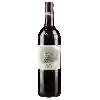
Château MassereauTradition
In the mouth this red wine is a powerful with a nice balance between acidity and tannins.
This wine generally goes well with poultry, beef or veal.
The Tradition of the Château Massereau is in the top 40 of wines of Bordeaux.
Taste structure of the Tradition from the Château Massereau
Light | Bold | |
Smooth | Tannic | |
Dry | Sweet | |
Soft | Acidic |
In the mouth the Tradition of Château Massereau in the region of Bordeaux is a powerful with a nice balance between acidity and tannins.
Food and wine pairings with Tradition
Pairings that work perfectly with Tradition
Original food and wine pairings with Tradition
The Tradition of Château Massereau matches generally quite well with dishes of beef, veal or game (deer, venison) such as recipes of kafta bil saniyeh (lebanese dish), roast veal with mustard cream or chicken waterzooi à la gantoise.
Details and technical informations about Château Massereau's Tradition.
Discover the grape variety: Montepulciano
A very old grape variety, most likely originating in Italy, now cultivated mainly in the central and central-eastern parts of this country, registered in France in the Official Catalogue of wine grape varieties, list A1. Montepulciano has long been confused with sangiovese or nielluccio, an A.D.N. analysis has shown that it is different.
Last vintages of this wine
The best vintages of Tradition from Château Massereau are 2017
Informations about the Château Massereau
The Château Massereau is one of of the world's greatest estates. It offers 14 wines for sale in the of Bordeaux to come and discover on site or to buy online.
The wine region of Bordeaux
Bordeaux, in southwestern France, is one of the most famous, prestigious and prolific wine regions in the world. The majority of Bordeaux wines (nearly 90% of the production Volume) are the Dry, medium and Full-bodied red Bordeaux blends for which it is famous. The finest (and most expensive) are the wines of the great châteaux of Haut-Médoc and the right bank appellations of Saint-Émilion and Pomerol. The former focuses (at the highest level) on Cabernet Sauvignon, the latter on Merlot.
The word of the wine: Alcoholic fermentation
Transformation of sugars into alcohol under the effect of yeast. These yeasts exist in their natural state in the vineyards and in the cellars. Artificial seeding with selected yeasts is however very often practiced.














